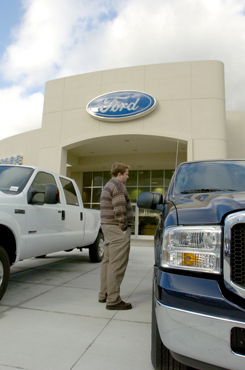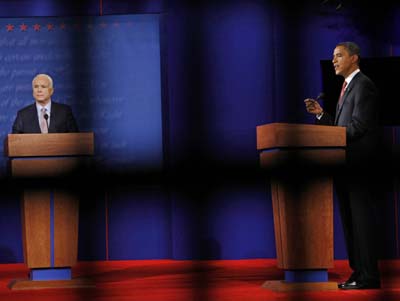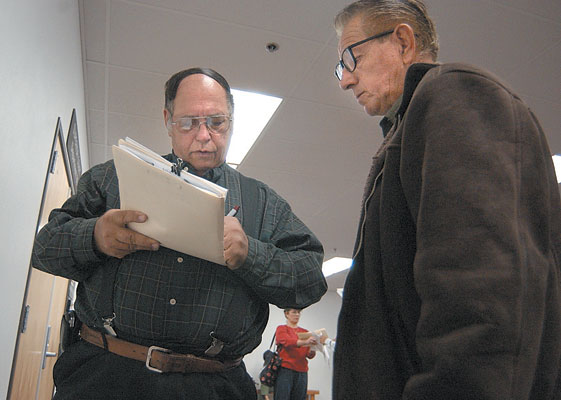
Morgan Hill finishes ‘Community Conversations’
Morgan Hill city staff and community leaders gathered April 29
to discuss the fiscal future of the city
– including, perhaps, even their meeting location inside the
brick red Community and Cultural Center built at the corner of
their Downtown corridor. After months of gathering residents’ input
in their unique Community Conversations, the Morgan Hill City
Council met for the first time with staff an
d community members to discuss the options before them.
Morgan Hill finishes ‘Community Conversations’
Morgan Hill city staff and community leaders gathered April 29 to discuss the fiscal future of the city – including, perhaps, even their meeting location inside the brick red Community and Cultural Center built at the corner of their Downtown corridor. After months of gathering residents’ input in their unique Community Conversations, the Morgan Hill City Council met for the first time with staff and community members to discuss the options before them.
The guidelines from the public are clear – they want to keep services as they are or enhance them in the future even if it means raising new revenues to support the city.
In January, city staff launched the first of 26 Community Conversation meetings and ended in April with more than 330 local residents participating in the sessions.
“This has been an experimental new way of engaging the community,” said Ed Tewes, Morgan Hill’s city manager. “It hasn’t always been well understood.”
The city paid Viewpoint Learning, Inc., an outside consulting firm, to help them develop a program to get a clear picture of what residents want as the city faces a $1.5 million annual budget deficit.
“We’ve been blessed with reserves,” Tewes said. “We had a savings account to come in for a soft landing.”
But the city is about to go off the runway if they don’t make changes in their budget soon. Rather than have the city council make decisions for the future of the city, they opted to allow input from the community.
“We are not immune to the economic downturn on the national or state level,” Tewes said. “We’ve had reduced revenues from sales tax and transient residential taxes, or hotels.”
The Community Conversations hosted from January to April drew a cross-section of the population. The participants looked at ways to cut costs, which included cuts in administration, recreation programs, park maintenance or public safety. Future sources of revenue included a variety of tax increases from a utility users tax to more sales tax from new retail developments.
The participants spent 2 and a half hours learning about how the pending budget deficit came to be. They broke into small groups to decide on the best approach for the future – cuts vs. increased revenue – and presented their thoughts to the entire group at the end of the program. Each person also completed an individual survey where they gave their own personal ideas of the best answer for the city.
The demographics of the people who attended the sessions and those of the overall city residents are similar. About 87 percent of those who attended are homeowners and 40 percent had children at home.
“We were surprised at how representative the groups were,” said Melissa Stevenson Dile, assistant to the city manager.
City council members refrained from attending the meetings out of concern that they might influence the outcome of the sessions. The sessions did evolve, with residents asking for more information about such things as park maintenance, police officer staffing and crime statistics.
After tallying up all the input, 54 percent of those participating in the Community Conversations wanted to preserve the current level of services. A third of those participating wanted to increase services. For each of those options, new sources of revenue are required.
Erin O’Brien from Community Solutions, Dan Erhler, the executive director of the Morgan Hill Chamber of Commerce, Rocke Garcia, a local developer and some forty other local residents devoted a Saturday morning to reviewing the input from the public and putting forth their best ideas on how the city council should proceed in the coming months.
The participants of the focus group pointed out a change in the mindset of people about paying taxes for services, prompted by the passing of proposition 13; growth control in Morgan Hill limiting its revenue resources; and lacking retail development compared to Gilroy. Other issues included the high percentage of young families in Morgan Hill compared to the rest of the county and the mobility allowed with the widening of Hwy. 101.
Without an increase in revenue, the attendees of the event felt the city would see increased crime from nearby communities; polarization of different groups; and the loss of community identity.
The group worked to identify the best way to implement the suggestions from the public sessions. They favored a development tax, with 2/3 of participants saying they would support it. The tax would be a one-time tax on new developments in the city of about $6,000 per house. Retail development was the second favorite option, with 58 percent saying they supported new projects to bring more sales tax into the city.
Many of the groups came to similar conclusions about each, though in most cases they wanted more information about the options. Bob Escobar, a planning commissioner, presented his groups’ thoughts.
“The options discussed shouldn’t carry the burden on their own,” Escobar said. “We support a development tax with modifications. It shouldn’t be a flat rate across the board.”
The other groups also supported a development tax or fee, but were concerned about how a flat rate might affect lower income families. They were also concerned that new residents would be shouldering the cost of the budget deficit instead of all residents. For retail developments, the groups supported additional car dealerships and new shopping centers. The groups also considered a real property tax transfer, though because that option would require Morgan Hill to become a charter city as opposed to a general law city, the suggestion was for the Council to gather more information on it.
Many of the attendees felt going forward the Council shouldn’t just focus on the budget deficit, but take the opportunity to look at the future of Morgan Hill.
“It’s not just to fill a budget deficit, but to make Morgan Hill a better place,” one participant said. “The problem is bigger than a structural gap.”
The City Council will discuss the options further at a retreat in May.
“We will keep in mind that this is a new vision,” Kennedy said. “I heard it referred to as a ‘New’ Morgan Hill.”








